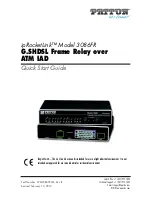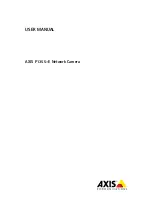
1-6
Device
Port name
BPDU of port
CP1
{2, 0, 2, CP1}
Device C
CP2
{2, 0, 2, CP2}
z
Comparison process and result on each device
The following table shows the comparison process and result on each device.
Table 1-5
Comparison process and result on each device
Device
Comparison process
BPDU of port after
comparison
Device A
z
Port AP1 receives the configuration BPDU of Device B {1, 0,
1, BP1}. Device A finds that the configuration BPDU of the
local port {0, 0, 0, AP1} is superior to the configuration
received message, and discards the received configuration
BPDU.
z
Port AP2 receives the configuration BPDU of Device C {2, 0,
2, CP1}. Device A finds that the BPDU of the local port {0, 0,
0, AP2} is superior to the received configuration BPDU, and
discards the received configuration BPDU.
z
Device A finds that both the root bridge and designated
bridge in the configuration BPDUs of all its ports are Device A
itself, so it assumes itself to be the root bridge. In this case, it
does not make any change to the configuration BPDU of
each port, and starts sending out configuration BPDUs
periodically.
AP1: {0, 0, 0, AP1}
AP2: {0, 0, 0, AP2}
z
Port BP1 receives the configuration BPDU of Device A {0, 0,
0, AP1}. Device B finds that the received configuration BPDU
is superior to the configuration BPDU of the local port {1, 0,1,
BP1}, and updates the configuration BPDU of BP1.
z
Port BP2 receives the configuration BPDU of Device C {2, 0,
2, CP2}. Device B finds that the configuration BPDU of the
local port {1, 0, 1, BP2} is superior to the received
configuration BPDU, and discards the received configuration
BPDU.
BP1: {0, 0, 0, AP1}
BP2: {1, 0, 1, BP2}
Device B
z
Device B compares the configuration BPDUs of all its ports,
and determines that the configuration BPDU of BP1 is the
optimum configuration BPDU. Then, it uses BP1 as the root
port, the configuration BPDUs of which will not be changed.
z
Based on the configuration BPDU of BP1 and the path cost of
the root port (5), Device B calculates a designated port
configuration BPDU for BP2 {0, 5, 1, BP2}.
z
Device B compares the calculated configuration BPDU {0, 5,
1, BP2} with the configuration BPDU of BP2. If the calculated
BPDU is superior, BP2 will act as the designated port, and
the configuration BPDU on this port will be replaced with the
calculated configuration BPDU, which will be sent out
periodically.
Root port BP1:
{0, 0, 0, AP1}
Designated port
BP2:
{0, 5, 1, BP2}
Device C
z
Port CP1 receives the configuration BPDU of Device A {0, 0,
0, AP2}. Device C finds that the received configuration BPDU
is superior to the configuration BPDU of the local port {2, 0, 2,
CP1}, and updates the configuration BPDU of CP1.
z
Port CP2 receives the configuration BPDU of port BP2 of
Device B {1, 0, 1, BP2} before the message was updated.
Device C finds that the received configuration BPDU is
superior to the configuration BPDU of the local port {2, 0, 2,
CP2}, and updates the configuration BPDU of CP2.
CP1: {0, 0, 0, AP2}
CP2: {1, 0, 1, BP2}
Содержание Switch 4800G PWR 24-Port
Страница 165: ...1 8 4 mac address es found on port GigabitEthernet1 0 2 ...
Страница 214: ...ii Displaying and Maintaining System Guard 4 1 ...
Страница 445: ...ii ...
Страница 727: ...i Table of Contents Appendix A Acronyms A 1 ...
Страница 730: ...A 3 VOD Video On Demand W WRR Weighted Round Robin X XID eXchange Identification XRN eXpandable Resilient Networking ...
















































